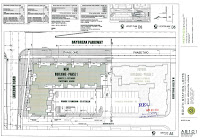 The National Association of Home Builders has awarded Daybreak Community of the Year for 2010. The Best in American Living Awards (BALA) is an organization that recognizes those who have achieved superior levels of creativity and innovation in their designs for residential development on a macro and micro scale. Judging is conducted by an expert panel of builders, design professionals, marketing professionals, land planners, interior designers and editors. The judging criteria for community of the year:
The National Association of Home Builders has awarded Daybreak Community of the Year for 2010. The Best in American Living Awards (BALA) is an organization that recognizes those who have achieved superior levels of creativity and innovation in their designs for residential development on a macro and micro scale. Judging is conducted by an expert panel of builders, design professionals, marketing professionals, land planners, interior designers and editors. The judging criteria for community of the year:•Exterior design/curb appeal
•Site Plan
•Construction quality/cost efficiency
•Product sales success
As you can see one of the best indicators of winning the award is product sales success. As the Daybreak community was ranked as the sixth best selling master planned community in the United States for 2009 by RCLCO
 (Robert Charles Lesser & Co., LLC, it is no surprise that they were in good standing to win this award.
(Robert Charles Lesser & Co., LLC, it is no surprise that they were in good standing to win this award.Daybreak also received the 2010 BALA Platinum Award for Suburban Smart Growth Community. This award is judged on the following criteria:
•Protect and provide access to the natural environment
•Incorporate a mix of land uses
•Use land in an efficient and innovative manner
•Encourage multiple transportation options
•Be pedestrian-scaled and pedestrian-friendly
•Provide housing choices
•Respect local traditions
•Utilize infill opportunities
•Deliver a genuine experience of place
•Create jobs and affect the economic environment
With Daybreak's commercial center, TRAX, mix of housing options and new urban design, a platinum award in this category is no surprise.




























